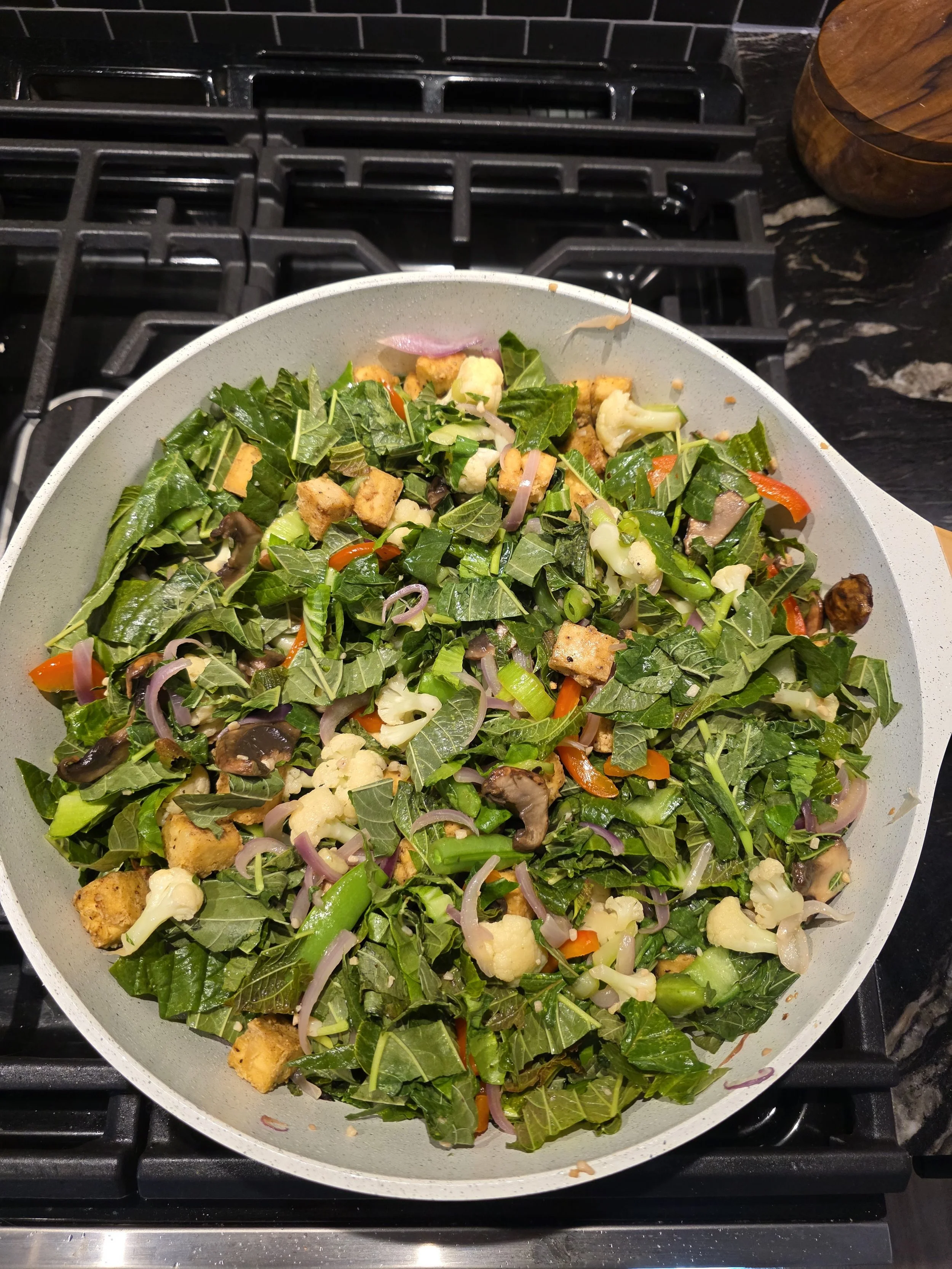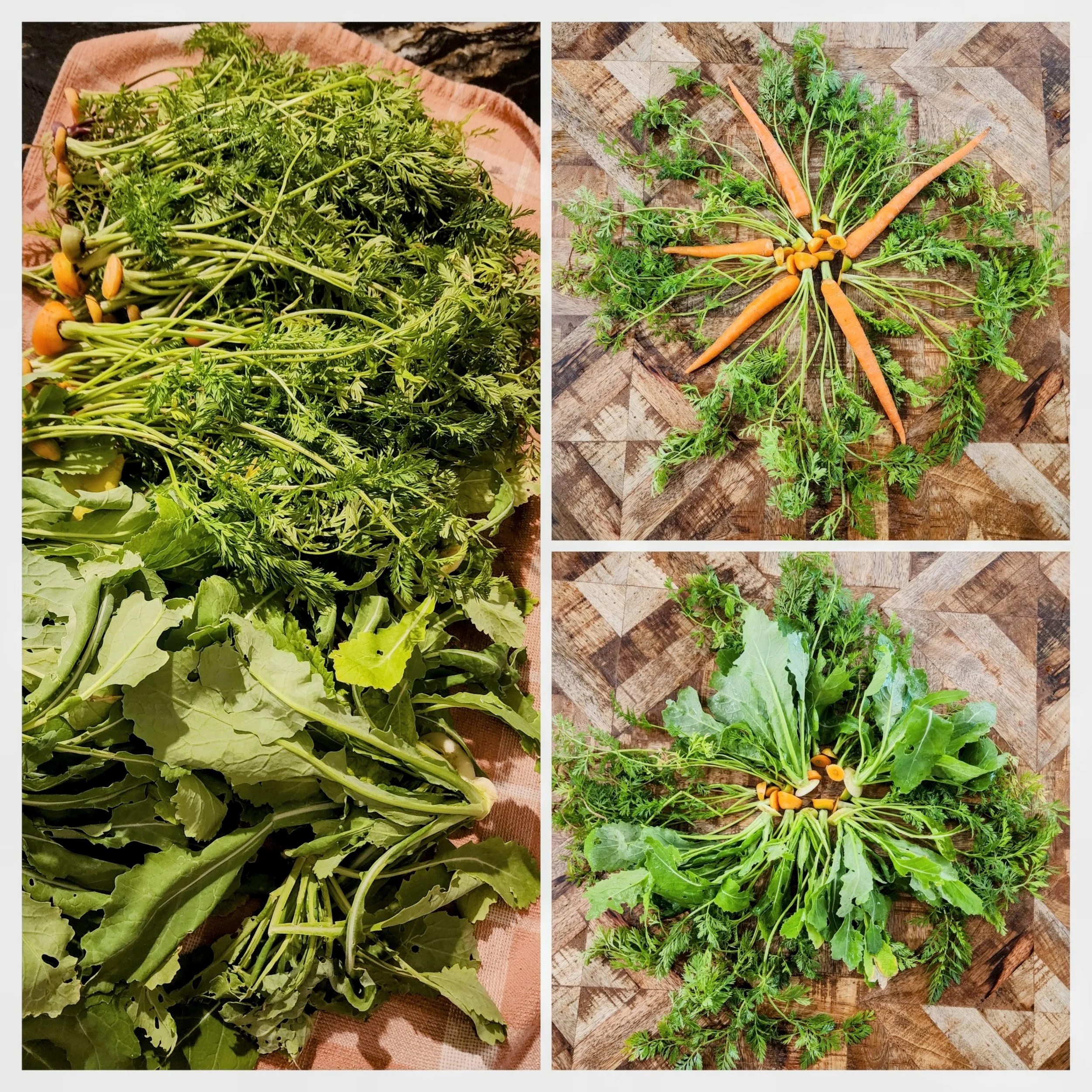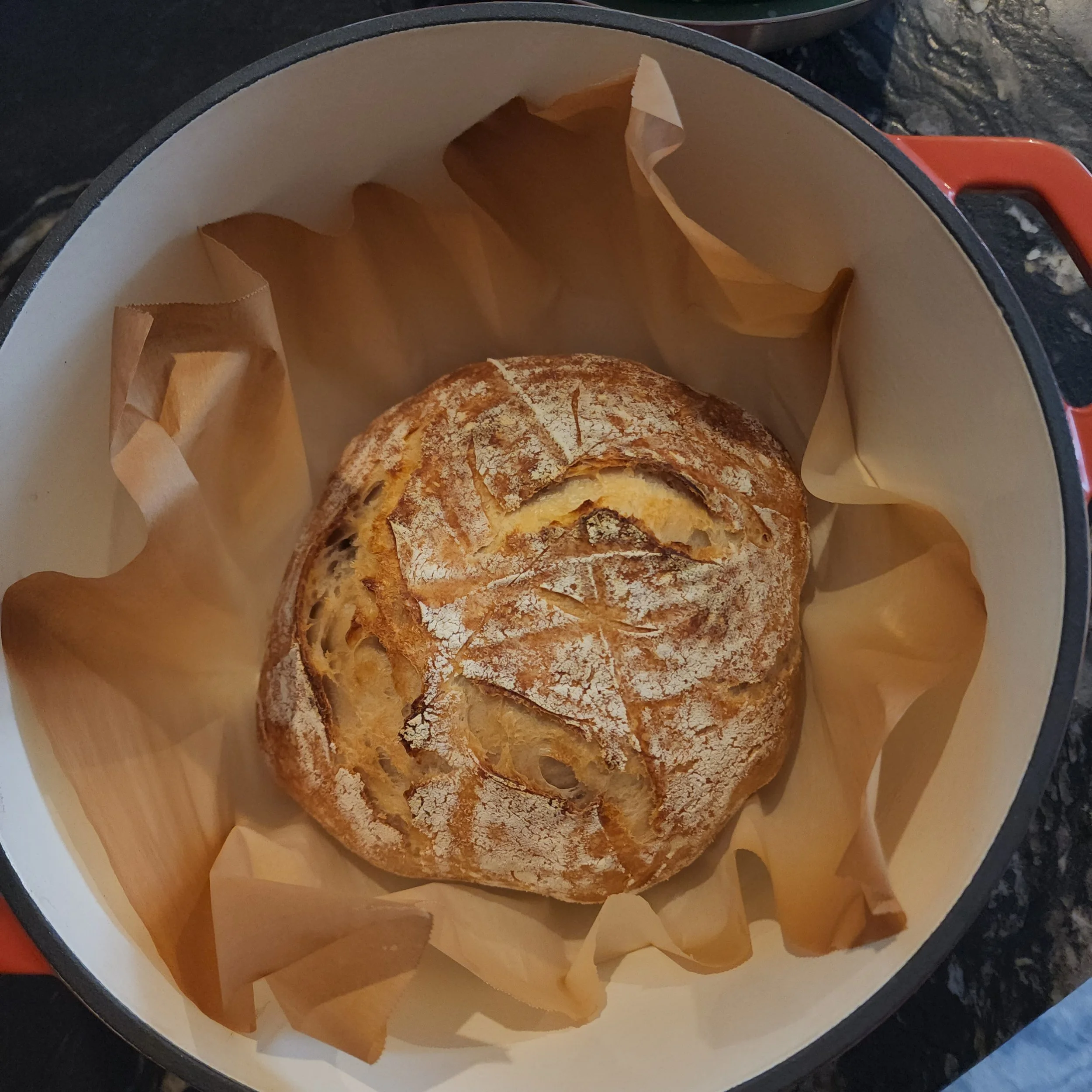So, I’m Plant Based. And I Made Bone Broth. Let’s Talk About It.
A Plant-Forward Cook… Making Bone Broth? Yes. Here’s Why.
If you’ve followed my cooking for a while, you know my kitchen leans heavily plant based. My meals are full of color, fiber, minerals, gentle flavors, and foods that support digestion and stress resilience. But I also believe in nuance — food choices should be rooted in intention, not perfection. And sometimes, that means embracing foods outside my usual pattern.
For me, two such foods have earned an honored place:
✨ A good-quality cheese
✨ A truly well-made bone broth
Both offer nutrients and depth that plants alone can’t always replicate, and both remind me that nourishment is personal, not dogmatic.
But let me be completely honest…
I had never made bone broth before this. And I was nervous.
Beef broth? I know it’s mineral-rich and deeply supportive, but my palate simply refuses it. I’ve tried. And tried. My body just votes “nope.”
So when this holiday turkey offered up its leftovers, I decided to try something new: a lighter, gentler bone broth. Something soothing, not heavy. Something I could actually sip and enjoy.
And surprisingly… this version is absolutely lovely.
It’s delicate, savory, mineral-rich, and doesn’t carry that intensity beef broth tends to have. It feels like a broth that belongs in a mostly plant-based kitchen — a bridge between the nourishment of animal foods and the gentleness of vegetables, herbs, and scraps that would otherwise be tossed.
It’s the kind of broth that reminds me nourishment isn’t rigid; it simply asks us to be thoughtful.
Proof that 90% of my cooking starts with veggie scraps and really good intentions.
How to make bone broth at home:
Bones + Scraps
Turkey carcass, including wings, leg bones, and any roasted bits
Skin and connective tissue
Vegetables + Aromatics
(Mostly from my freezer scrap bag.)
Onion ends
Celery tops
A few carrot ends
Garlic cloves
Mushrooms
Fresh sliced ginger - because GINGER
Herbs like thyme, sage, or rosemary
A splash of apple cider vinegar to help draw minerals from the bones
My plant-forward stomach said ‘nope’ 🤢… but my nutrient brain said ‘carry on.’
How I Made It (step by step instructions):
1. Load your stock pot or slow cooker.
Everything goes in — bones, scraps, aromatics, herbs.
This part felt like coming home again… vegetables to the rescue.
2. Cover with cold water.
Just enough to submerge the contents. This part is important!
3. Bring it to a gentle simmer.
Not a rolling boil. Simmering keeps the broth clear and allows slow mineral extraction.
4. Let it cook long and low.
Stovetop: 8–12 hours
Slow cooker: 12–24 hours
Instant Pot: ~2 hours on high pressure
Longer time = deeper flavor + better gel.
5. Strain it.
Use a fine mesh sieve to remove solids. You can then use those scraps in your compost pile, so nothing goes to waste!
Proof that patience has a flavor.
6. Chill it.
A solid layer of fat rises to the top — you can keep it or scoop it off.
7. Mix in the gel.
If you see a wobbly gelatin layer, celebrate. That’s the good stuff. Mix that in and use it, it’s where a lot of the nourishment comes from!
How Much This Batch Made
From one turkey carcass, I ended up with:
• 4 jars (16 oz each)
• 2 jars (32 oz each)
The cozy reward for sticking through the turkey-carcass moment.
Perfect for winter soups, quick sipping mugs, and nutrient-rich cooking.
Storage Tips
Refrigerator: up to 5 days
Freezer: up to 6 months
I like freezing some in ice cube trays for small flavor boosts.
How to Use This Bone Broth
Let it be your kitchen sidekick:
🥣 Sip it on its own with sea salt as gut supportive nourishment
🍲 Build soups, stews, or ramen - I’ve already used both the 32 ounce jars I had in the fridge! I used this broth instead of veggie broth in one of my favorite all time nourishing winter recipes: https://minimalistbaker.com/curried-butternut-squash-soup/
🥘 Add depth to sauces and gravies
🍚 Cook rice or quinoa in it for extra minerals
🫕 Use it to deglaze pans for rich, savory flavor
Even in a plant-forward kitchen, bone broth can be a deeply intuitive choice — supportive, grounding, and a beautiful way to reduce waste.
Final Thoughts
One more thing I want to share, especially for anyone navigating digestive ups and downs: bone broth can be incredibly soothing for the gut. Its natural gelatin gives the lining of the digestive tract a kind of soft, protective hug, helping things feel calmer and more supported. The minerals pulled from the bones — like calcium, magnesium, and potassium — also play quiet but powerful roles in digestion, motility, and overall gut resilience. Even in a mostly plant-based kitchen like mine, this lighter turkey broth feels like a gentle ally for anyone wanting to nourish their digestive system without overwhelming it.
Homemade broth doesn’t need perfection; it just needs time, scraps, and intention. This was my first time making bone broth, and it turned out better than I ever expected. If you try your own, especially if you’re plant-leaning like me, you may find that this lighter, turkey-based version is exactly the gentle introduction you’ve needed.
Warm bowls await. 🍁
Feast Your Eyes, Fuel Your Body: A Journey Through Mindful Eating and the "Rainbow"
Explore the “why” behind eating the rainbow is so important
We often hear the phrase "eat the rainbow," and for good reason! Our plates can be a canvas of vibrant colors, each one whispering promises of health and vitality. Let's take a journey through a recent meal, from pan to plate, to explore why a colorful diet, leafy greens, and mindful eating are so crucial for our well-being.
Why "Eating the Rainbow" is Healthy
Just look at that medley of fresh vegetables sizzling in the pan! From the earthy browns of mushrooms and the bright whites of cauliflower to the crisp greens of snap peas and the fiery reds of bell peppers, this stir-fry is a perfect example of "eating the rainbow."
Why is this so important? Each color in fruits and vegetables often signifies a different set of vitamins, minerals, and antioxidants.
Red: Think of the lycopene in bell peppers, a powerful antioxidant known for heart health benefits.
Green: The chlorophyll in snap peas and other green veggies is packed with vitamins K and C, and folate, supporting bone health and immunity.
White/Brown: While not as vibrant, foods like cauliflower and mushrooms offer their own unique benefits, including fiber and various B vitamins.
By incorporating a wide array of colors into your meals, you're ensuring your body receives a broad spectrum of nutrients, essential for everything from boosting your immune system to maintaining healthy skin and improving energy levels. It's like giving your body a comprehensive health insurance policy with every bite!
The Power of Green – Embracing Leafy Greens (and Wilted Amaranth!)
In the next stage of our culinary adventure, you can see the vibrant green of leafy greens, like the wilted amaranth in this dish, being added to the mix. This truly highlights the importance of incorporating these powerhouses into your diet.
Leafy greens are nutritional superstars, often touted for their impressive nutrient density. They are typically rich in:
Vitamins: Especially Vitamin K (crucial for blood clotting and bone health), Vitamin A (for vision and immune function), and Vitamin C (an antioxidant).
Minerals: Such as iron (for energy), calcium (for bones), and potassium (for blood pressure).
Fiber: Essential for digestive health, helping to keep you feeling full and promoting regularity.
Antioxidants: These compounds help protect your cells from damage caused by free radicals, potentially reducing the risk of chronic diseases.
Whether it's amaranth, spinach, kale, collard greens, or Swiss chard, adding a generous portion of leafy greens to your meals provides a significant boost to your overall health, supporting everything from your heart to your gut.
The Finished Masterpiece – The Art of Mindful Eating
And finally, the glorious culmination – the finished dish, beautifully presented in a bowl, ready to be enjoyed. This is where the concept of mindful eating comes into play.
Mindful eating isn't about dieting or restriction; it's about paying attention to your food, your body, and your eating experience. It involves:
Engaging Your Senses: Notice the vibrant colors, the aroma of the cooked vegetables, the textures as you chew, and the complex flavors.
Listening to Your Body: Pay attention to hunger and fullness cues. Eat when you're hungry, and stop when you're satisfied, not necessarily when your plate is empty.
Slowing Down: Take your time with each bite. Chew thoroughly. This not only aids digestion but also allows your brain time to register that you're eating, leading to greater satisfaction.
Appreciating Your Food: Think about where your food came from, the effort that went into preparing it, and how it nourishes your body.
By practicing mindful eating, you can transform a simple meal into a more profound experience. It helps you build a healthier relationship with food, reduce overeating, and truly savor the delicious and nutritious journey you're taking with every "rainbow" bite.
So, the next time you're planning a meal, remember the power of color, the importance of greens, and the beauty of eating with intention. Your body will thank you for it!
From Farm to Table: Embracing the Root to Stem Philosophy
Fresh carrot & turnip tops ready to be used in amazing, nutritious ways!
Yesterday, while volunteering at the amazing Samaritan Community Center in Rogers, Arkansas, I witnessed the incredible impact of their community farm. Producing up to 15,000 pounds of fresh produce annually, this farm brings nutritious food to those who need it most. As we worked with carrots and turnips, I was reminded of the often-overlooked value of vegetable scraps.
As we cleaned up, my fellow volunteer asked if I wanted the discarded carrot and turnip tops. My enthusiastic "yes!" sparked a conversation about the potential of these humble leaves. It's a common practice to discard vegetable tops, but what if I told you that these scraps are not only edible but also packed with nutrients? Would that change your idea of what to do with vegetable tops?
This encounter led me to reflect on the "Root to Stem" philosophy, a movement that encourages us to use every part of a vegetable to minimize waste and maximize nutrition. Inspired by the "Nose to Tail" movement in the meat-eating community, Root to Stem promotes creativity and sustainability in the kitchen.
Let's explore the perks of using the whole vegetable, starting with the humble turnip leaf, which packs a surprising nutritional punch.
The Humble Turnip Leaf: A Nutritional Powerhouse
Turnip leaves, often discarded in favor of their crunchy bulbs, are a treasure trove of nutrients. Rich in vitamins A, C, and K, as well as minerals like potassium, calcium, and iron, these leaves offer a wealth of health benefits.
- Vitamin A: Essential for healthy vision, immune function, and skin health.
- Vitamin C: Boosts immunity, supports collagen production, and enhances iron absorption.
- Vitamin K: Crucial for blood clotting, bone health, and cardiovascular health.
- Folate: Essential for cell growth, DNA synthesis, and preventing birth defects. Absolutely fantastic for pregnant women by the way!
- Minerals: Rich in potassium, calcium, and iron, which support healthy blood pressure, bone health, and oxygen transport.
- Antioxidants: Contain various antioxidants that help protect against oxidative stress, inflammation, and chronic diseases.
I'll be the first to admit, using the lesser-known parts of veggies can be a challenge. But, I've learned a few tricks along the way, and I'm excited to share them with you. If you're feeling adventurous and want to give the Root to Stem philosophy a try, here are some ideas to get you started:
- Salads: Chop turnip leaves and add them to salads for a peppery flavor.
- Saag: Cook turnip leaves with garlic and spices to make a delicious Indian-inspired saag dish.
- Soups: Add turnip leaves to soups like minestrone or creamy soups for added nutrition.
- Stir-fries: Stir-fry turnip leaves with garlic, ginger, and your favorite vegetables for a quick and easy side dish.
- Pesto: Blend turnip leaves with olive oil, garlic, and parmesan cheese to make a tasty and healthy pesto sauce.
Embracing the Root to Stem Philosophy
The benefits of embracing the Root to Stem philosophy extend far beyond the humble turnip leaf. By using every part of a vegetable, you'll not only reduce food waste but also:
- Discover new flavors: Experimenting with different vegetable parts can lead to exciting new flavors and textures.
- Increase nutrition: Many vegetable scraps are rich in vitamins, minerals, and antioxidants, offering a boost to your overall health.
- Reduce food waste: By using every part of a vegetable, you'll significantly reduce the amount of food waste generated in your kitchen.
As you embark on your Root to Stem journey, remember that every vegetable offers a unique opportunity to get creative and reduce waste. Experiment with different recipes, get creative and explore new ingredients, and join the movement towards a more sustainable and nutritious food culture. Happy Root to Stem-ing! May your kitchen be filled with creativity, and your compost bin be empty.
My Adventures & Misadventures with the Mythical Sourdough
My adventures (and misadventures) with the mythical sourdough
My very first successful loaf of sourdough…the angels wept at how long it took me to create this…remember, patience is KEY
For centuries, sourdough bread has been a staple in many cultures, prized for its unique flavor, texture, and nutritional benefits. This ancient bread has experienced a resurgence in popularity, and for good reason. Not only does sourdough taste amazing, but it also offers a host of advantages for our health, digestion, and overall well-being.
The Benefits of Sourdough Bread
1. Easier to Digest: Sourdough bread contains lactic acid, which breaks down some of the gluten, making it easier to digest for those with gluten sensitivity.
2. Higher Nutrient Content: The longer fermentation time of sourdough bread increases the bioavailability of nutrients like iron, zinc, and magnesium.
3. Lower Glycemic Index: Sourdough bread is digested more slowly, resulting in a lower glycemic index and a more stable blood sugar response.
4. Increased Probiotics: The natural yeast and bacteria present in sourdough starter promote the growth of beneficial probiotics, supporting gut health.
5. Unique Flavor and Texture: Sourdough bread's tangy, slightly sour taste and chewy texture are unmatched by commercial bread.
With all that being said, the idea of creating my own sourdough was awfully intimidating but as a Nutritional Therapy Practitioner, I was determined to overcome my trepidation and create a tasty loaf! After all, how could I extol the virtues of sourdough if I couldn’t even make it myself??
My Sourdough Journey: A Cautionary Tale
I'll be the first to admit, my initial foray into sourdough bread-making was...less than stellar. I threw caution to the wind, ignoring the sacred rituals of stretch and fold, overnight resting, and carefully measured ingredients. The result? A flat, dense, hockey-puck-like loaf that could've doubled as a doorstop.
As I took a tentative bite, I realized my mistake. But that failed experiment taught me a valuable lesson: patience and precision are key when it comes to sourdough. Now, I'm meticulous about my feeding schedule, timing, and recipe adherence. My calendar is filled with reminders to feed my starter, and I follow recipes to the letter (no deviations allowed...yet!).
Don't Be Afraid to Fail!
Sourdough can be intimidating, especially for beginners. The multiple steps, precise measurements, and unpredictable nature of wild yeast can be daunting. But here's the thing: failure is an essential part of the learning process!
Don't be discouraged if your first loaves don't turn out as expected. Keep trying, and you'll eventually develop the skills and confidence to create beautiful, delicious sourdough bread.
Getting Started with Sourdough
Ready to embark on your own sourdough journey? Start by creating your own starter using this simple recipe from I Am Homesteader: https://iamhomesteader.com/sourdough-starter/#wprm-recipe-container-64752
Once you have your starter thriving, try your hand at baking your first loaf using this beginner-friendly recipe from Farmhouse on Boone: https://www.farmhouseonboone.com/beginners-sourdough-bread-recipe/#wprm-recipe-container-40698
Happy baking, and remember: even the most imperfect loaves can lead to a perfect crust (and a great sense of humor)!












